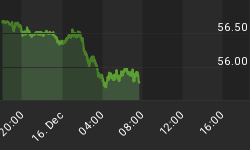By James Hyerczyk
The U.S. Dollar finished higher against most major currencies but intraday profit-taking helped the Greenback close well off its highs.
The early session rally in the Dollar began overnight in the wake of a lawsuit filed by the SEC against Goldman Sachs on Friday. Aggressive selling by investors of risky stocks and commodities helped trigger the rally. Weaker equities, gold and crude oil sent a message that risk was going to be taken off the table. Investors have been moving money to less risky, lower yielding currencies since Friday's surprise announcement on speculation that the investigation may broaden.
After an early session surge, the Dollar weakened throughout the day as commodity and stock indices recovered after anticipated follow-through selling during the New York session failed to materialize.
The EUR USD continued its slide early on speculation that Greece would have to tap its rescue loans to meet its short-term obligations. The spread between Greek Bonds and German Bunds continued to raise concerns that Greece was on the brink of collapse if it couldn't service its debt. News that European air traffic resumed after being shutdown for several days seemed to give equity markets a boost which helped trigger a turnaround in the Euro late in the trading session.
The British Pound was down sharply overnight and early in the New York session as concerns continued to mount about the possibility of a hung parliament following the May 6th election. Investors are worried that a virtual tie between the Labor Party and the Conservative Party will mean that the next administration will have a difficult time working out solutions to its current budget deficit crisis. Continue to look for volatility as traders speculate on the direction of the British Pound following the release of pre-election poll results.
The falling Euro helped send the USD CHF higher early in the trading session. Traders raised concerns that the Swiss National Bank would have to continue to intervene to protect the Swiss economy, especially its exports.
Increased demand for lower risk assets helped give the Japanese Yen a boost overnight as nervous traders sold off positions in higher risk, higher yielding assets. The inability to break stocks and commodities after a sharply lower opening fueled an intraday rally in the USD JPY that carried over into the close.
The sharp sell-off in gold and crude oil triggered a strong rally in the USD CAD overnight, but the lack of selling pressure throughout the day helped the Canadian Dollar recover some of its earlier loss. This rally was most likely short-covering rather than buying. On Tuesday the Bank of Canada meets to discuss monetary policy. The Canadian financial markets are indicating that investors expect the BoC to lean toward increasing interest rates as early as June 1st rather than the earlier speculated July 1st.
Falling demand for higher risk assets as well as speculation that the Chinese will revalue the Yuan helped pressure the AUD USD and NZD USD early in the trading session. Both the Aussie and Kiwi turned around about mid-session after it became clear to investors that there would be no follow-through to the downside in the equity complex.
Short-term oversold conditions also helped both of these currency pairs cut their earlier losses. New Zealand Dollar traders cut their losses on speculation that the Reserve Bank of New Zealand may talk about hiking interest rates some time after June because of the improving economy. The RBNZ meets on April 28th.
















